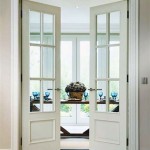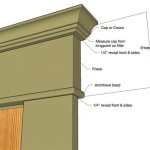How to Cover Interior Cement Block Walls
Cement block walls, while sturdy and functional, often present an aesthetic challenge in interior spaces. Their unfinished appearance can feel cold and industrial. Fortunately, there are numerous methods to cover cement block walls, transforming them into attractive and comfortable features of a room. Selecting the right method depends on factors such as budget, desired aesthetic, and the level of DIY skill.
Applying Drywall
Drywall is a popular choice for covering cement block walls due to its relative affordability and ease of installation. It creates a smooth, even surface suitable for various finishes like paint or wallpaper.
Key points for drywall installation:
- Furring strips create an air gap for insulation and moisture control.
- Special fasteners secure the drywall to the cement block.
- Taping and joint compound create a seamless finish.
Using Paneling
Paneling offers a variety of styles, from traditional wood to modern composite materials. It can add architectural detail and warmth to a space, and installation can be quicker than drywall.
Key points for paneling installation:
- Paneling can be attached directly to the cement block or to furring strips.
- Adhesive and nails or screws secure the panels.
- Pre-finished paneling reduces finishing time.
Plastering Directly onto the Block
Plastering directly onto the cement block offers a classic, durable finish. This method requires more skill and time than other options but can produce a beautiful, textured surface.
Key points for plastering:
- The block surface must be clean and free of debris.
- A bonding agent improves adhesion of the plaster.
- Multiple coats of plaster may be necessary for a smooth finish.
- Different plastering techniques create various textures.
Applying a Cement-Based Coating
Cement-based coatings create a smooth, waterproof surface ideal for areas prone to moisture, such as basements or bathrooms. These coatings can be tinted or painted for aesthetic appeal.
Key points for applying cement-based coatings:
- Proper surface preparation is crucial for good adhesion.
- The coating is applied with a trowel or sprayer.
- Different textures can be achieved depending on the application technique.
Covering with Tile
Tile offers a durable, water-resistant, and aesthetically versatile option for covering cement block walls. It is particularly well-suited for bathrooms, kitchens, and laundry rooms.
Key points for tiling:
- A cement backer board provides a suitable substrate for tile adhesion.
- Thin-set mortar secures the tiles to the backer board.
- Grout fills the spaces between tiles and provides a finished look.
Utilizing a Stud Wall
Building a stud wall in front of the cement block creates a cavity for insulation and wiring. This method provides the most flexibility for finishes and allows for a truly finished interior look.
Key points for stud wall construction:
- The stud wall is framed with lumber attached to the floor and ceiling.
- Insulation can be placed between the studs for thermal and acoustic benefits.
- Drywall or other finishes are then applied to the stud wall.
Painting Directly on the Cement Block
Painting directly onto the cement block is a budget-friendly option that can brighten and improve the appearance of the wall. Proper preparation is vital for achieving a durable and attractive finish.
Key points for painting cement block:
- Clean the wall thoroughly to remove dirt, efflorescence, and loose mortar.
- Apply a block filler to smooth the surface and improve paint adhesion.
- Use a masonry primer designed specifically for concrete and block surfaces.
- Apply multiple coats of masonry paint for optimal coverage and durability.
Using Textured Coatings
Textured coatings, like stucco or textured paint, can hide imperfections in the cement block and create a visually interesting surface. These coatings are available in a wide range of textures and colors, allowing for customization of the finished look.
Key points for textured coatings:
- Clean and prepare the surface thoroughly for optimal adhesion.
- A primer may be necessary depending on the specific coating and the condition of the block.
- Apply the textured coating using a trowel, roller, or sprayer as directed by the manufacturer.

Making It All Come Together With An Interior Concrete Block Wall Finish Hometone Home Automation And Smart Guide

15 Most Beautiful Cinder Block Wall Painting Ideas To Refresh Your Interior And Exterior Look

10 Ways To Cover Concrete Walls In A Basement Finish

85 Cinder Block Wall Ideas Styles Walls

Ten Tactile Home Interiors Featuring Exposed Concrete Blockwork

15 Brilliant Apartments With Concrete Elements

Stylish Solutions Covering Unfinished Basement Walls Csg Renovation

16 Concrete Block Wall Interior Design Ideas Walls

Surface Matters Block Honing Coatings And Flooring S For Concrete

Faux Cinderblock Panels Traditional Industrial Grey
Related Posts








